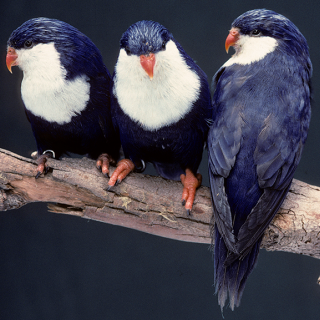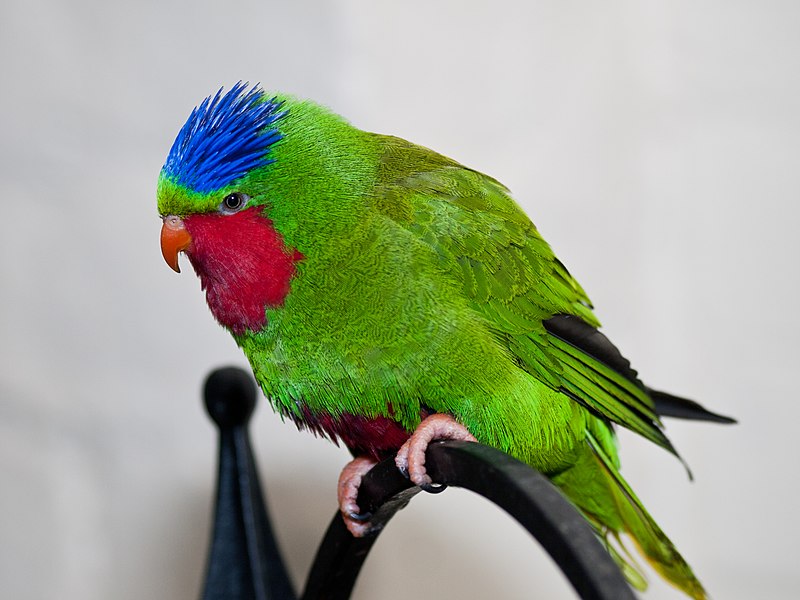I always wonder how a new mutation (for the very first time) come into existence ?
For example, as everyone knows that natural (wild) color of Rose-ringed parakeet is Green.
Now, how any breeder manage to create say for example, "Blue" mutation ?
As mentioned, it's when information in the genetic code getting passed down to offspring gets "messed up". Not necessarily a good example, but blue + yellow = green.
Blue, for example, is the reduction of "psittacin" (
psittacofulvin), which is what produces reds and yellows. Therefore, you get blue ringnecks.
Yellow on the other hand is the reduction of melanin, which controls blacks and browns. You remove melanin and you get a lutino (aka yellow) bird.
The following page goes into more detail than the previous article that was linked to, but that's a pretty basic understanding of it!
 Little Feathered Buddies coloration mechanics
Little Feathered Buddies coloration mechanics
Or a much simpler explanation here...
What Gives Feathers Their Color | Parrot Parrot
However, mutations can be
dominant (expressed same regardless if they carry one or two genes),
recessive (one gene to be split [
they carry the gene, but they are not visual for it], two to be visual),
sex-linked (females can only carry one gene and thus will always be visual if they have it, males require two genes in order to be visual, otherwise they are split for the mutation),
incomplete dominant (one gene to be single factor visual, and they show the mutation, two genes to be double factor visual and appear differently),
co-dominant (when two separate genes/mutations interact to form a halfway point between the two mutations)
Is it some kind of diet that helps to produce your desire mutation ? I have read somewhere that people in Europe in the past give alot of Red color in the food of Canaries to produce Red color and they did succeeded in producing Red. When those Red canaries were sold to new owners, then their Red color faded after some time as new owner gave the regular diet without any artificial red colors involved.
Actually, the red factor canaries came about by hybridizing the canary with a red siskin finch. Canaries cannot naturally produce red coloration on their own. The gene was introduced via hybridization which took time to get a healthy, breeding colony going. Once the gene for the red expression was introduced, canaries that were fed a "red dye" diet could produce red colored feathers. Much like flamingos. They are not naturally pink! They are white (grey) birds! However, their diet causes them to turn pink. Remove that from their diet and they revert to white (grey).
It is quite surprising that a Father and Mother are both Green and then a baby is born Blue !
This indicates that the parents are both split for blue, which means that they either had one parent that was visually blue, or at least one parent (if not both) that were split blue. If you pair two birds that are green and both split blue, then you'll get green, green split blue, and blue offspring.
So, how a new permanent color mutation is born ? What factors play important role ?
The short of it... genetics.
My grandmother is half Filippino. She has black hair (well, salt and pepper now-a-days... mainly salty...) and dark skin. All of her older siblings were fair skinned, blonde hair and blue eyes. She married a man with black hair and had three daughters, all with black hair as well. (skin tone varies between "dark" and "light" now-a-days) My mother, the oldest, had two daughters. My sister was born blonde haired and blue eyed. She has (med/dark) brown hair and brown eyes as an adult, skin ranges from pasty white (vitaligo) to "light tan". Her kids, like her, were born blonde hair, blue eyed. (father dirty blonde, blue eyed). The oldest child has brown eyes, the youngest blue/grey eyes. Both dirty blonde haired. I was born with light brown hair, brown eyes. As an adult, my hair is dark brown (some people even call it black... it's not black!) and my skin ranges from "light tan" to "dark tan". Our father has medium brown hair and hazel to brown eyes. My "middle" aunt has one daughter. She was born with fair(ish) skin and black hair with brown eyes. Her father had fair skin and black hair. My "youngest" aunt has two children. I don't really know what their father looks like, but her daughter was born fair skinned, blonde hair and blue eyes. Still has blue eyes and (dark) blonde hair. Her kids are all fair skinned with light brown to blonde hair. My "youngest" aunt's youngest child is fair skinned and dark brown hair, brown eyes. He has three kids with dirty blonde/blue, dirty blonde/brown and light brown/hazel colors (hair/eyes), even though their mother has brown hair, hazel eyes.
My grandmother and at least two of my aunts, despite having black hair and brown eyes, carried the blue eyed/blond hair genes. It was therefore hidden for at least two generations, and up to four generations, before it appeared. I don't have kids of my own, nor do I plan on it, so who knows if I carry the hidden genes or not! Goes to show though how intricate genetics can be!

(and confusing! lol)




